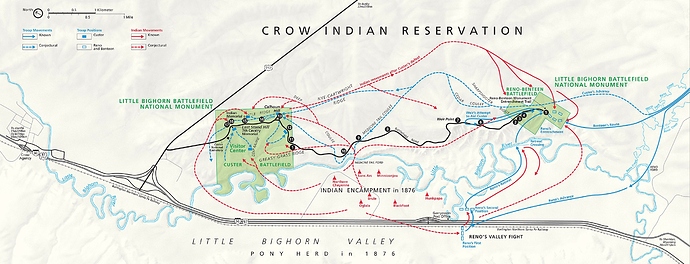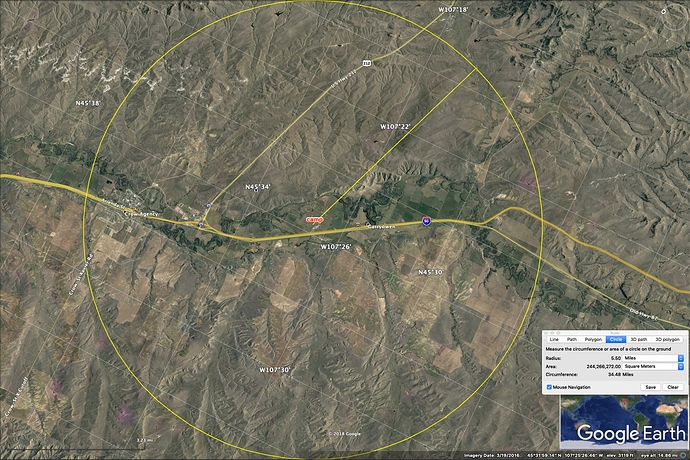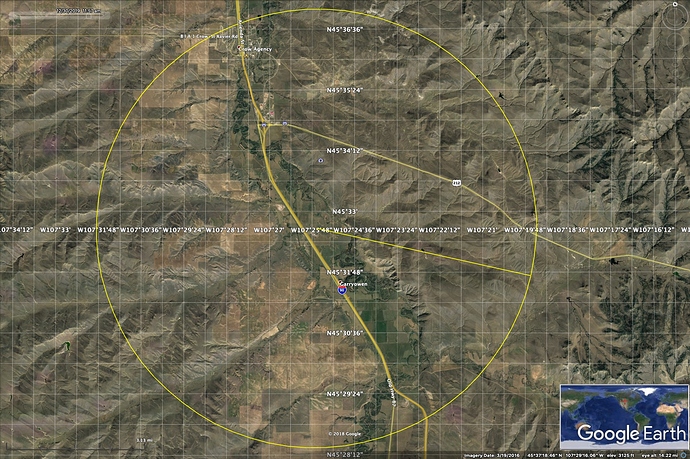People,
Just look at what's down there.
Dean
Subterranean Tunnels & the Hollow Earth
My Search for Tunnels in the Earth
Part Two
From "World Explorer", Vol. 2, No. 3.
by David Hatcher Childress
All are architects of fate,
Working the walls of time:
Some with massive deeds and great;
Some with lesser rhyme.
-Longfellow "The Builders"
In his book "Jungle Paths and Inca Ruins", Dr.William Montgomery McGovern
states:
"Near this fortress [Sacsayhuaman] are several strange caverns reaching far
into the earth. Here altars to the Gods of the Deep were carved out of the
living rock, and the many bones scattered about tell of the sacrifices which
were offered up here. The end of one of these caverns, Chincana, has never
been found. It is supposed to communicate by a long underground passage with
the Temple of the Sun in the heart of Cuzco. In this cavern is supposed, and
with good reason, to be hidden a large part of the golden treasure of the
Inca Emperors which was stored away lest it fall into the hands of the
Spaniards. But the cavern is so huge, so complicated, and its passages are so
manifold, that its secret has never been discovered."
"One man, indeed, is said to have found his way underground to the Sun
Temple, and when he emerged, to have had two golden bars in his hand. But his
mind had been affected by days of blind wandering in the subterranean caves,
and he died almost immediately afterwards. Since that time many have gone
into the cavern-never to return again. Only a month or two before my arrival
the disappearance of three prominent people in this Inca cave caused the
Prefect of the Province of Cuzco to wall in the mouth of the cavern, so that
the secret and the treasures of the Incas seem likely to remain forever
undiscovered."
Another story, which may well be derived from the same source, tells of a
treasure hunter who went into the tunnels and wandered through the maze for
several days. One morning, about a week after the adventurer had vanished, a
priest was conducting mass in the church of Santo Domingo. The priest and his
congregation were astonished to hear sudden, sharp rappings from beneath the
church's stone floor. Several worshipers crossed themselves and murmured
about the devil. The priest quieted his congregation, then directed the
removal of a large stone slab from the floor (this was the converted Temple
of the Sun!). The group was surprised to see the treasure hunter emerge with
a bar of gold in each hand.
Even the Peruvian government got into the act of exploring these Cuzco
tunnels, ostensibly for scientific purposes. The Peruvian Seria Documental
del Peru describes an expedition undertaken by staff from Lima University in
1923. Accompanied by experienced speleologists, the party penetrated the
trapezoid-shaped tunnels starting from an entrance atCuzco.
They took measurements of the subterranean aperture and advanced in the
direction of the coast. After a few days, members of the expedition at the
entrance of the tunnel lost contact with the explorers inside, and no
communication came for twelve days. Then a solitary explorer returned to the
entrance, starving. His reports of an underground labyrinth of tunnels and
deadly obstacles would make an Indiana Jones movie seem tame by comparison.
His tale was so incredible that his colleagues declared him mad. To prevent
further loss of life in the tunnels, the police dynamited the entrance.
More recently, the big Lima earthquake of 1972 brought to light a tunnel
system beneath that coastal city. During salvage operations, workers found
long passages no one had ever known existed. The following systematic
examination of Lima's foundations led to the astonishing discovery that large
parts of the city were undercut by tunnels, all leading into the mountains.
But their terminal points could no longer be ascertained because they had
collapsed during the course of the centuries. Did the Cuzco tunnels explored
in 1923 lead to Lima? As farback as the 1940s, Harold Wilkins, in his books
("Mysteries of Ancient South America" and "Secret Cities of Old South
America") wrote that they did.
Tunnels to the Hidden City of Paititi?
In my quest for the lost treasure of the Incas and the tunnel systems
associated with it, I joined up in the search for Paititi, the ultimate lost
city of the Incas according to Cuzco legends.
While the Incas placed some of their hoard in the Cuzco tunnel system to hide
it from the conquering Spanish, other treasure (including 14 gold-clad
mummies of the former Inca emperors removed from the Sun Temple) was sent by
llama caravan into the Antisuyo region of South America, the mountain jungle
area east of Cuzco. The caravan's destination was a mountain-jungle city
called "Paikikin" in Quechua which is supposed to mean "like the other." The
Spanish called this city El Gran Paititi.
It is well known that the Incan Empire at its height stretched from north of
Quito in Ecuador, south along the Andes and west to the coast, all the way
down into central Chile. What is not generally known is just how far east the
Incas had set up their roads, trade routes and cities. The Incas did have a
trade network that stretched eastward deep into the jungles on the east side
of the Andes. Salt was frequently carried across the mountains in exchange
for gold and feathers. According to Jorge Arellano, director of the Institute
of Archaeology in La Paz, Bolivia, Inca ruins have been found in the Bolivian
state of Beni, which is several hundred miles east of the Andes and in dense
jungle. He says that a series of small fortresses in the jungle form a line
in an easterly direction. He believes that the Incas used these fortresses as
stop overs on their migration from the Madre de Dios area of Peru, believed
by some to be the site of Paititi.
Though there is little doubt that Paititi did exist, there is a great deal of
myth surrounding this lost city. Harold Wilkins believes that the Incas
escaped from the Spanish after the battle of Ollantaytambo by fleeing through
a branch of the tunnel system discussed earlier, heading east toward Paititi.
This may well be true, though it was hardly necessary for the Incas to have
fled through a tunnel. They could have left by canoe, then crossed the
mountains using the excellent Inca roads.
Assuming this tunnel did exist, Wilkins thinks it went due east from Cuzco,
through the jungles, to the empire of Paititi. He indicates that Paititi was
a separate kingdom, ruled by mysterious white men whose king was known as the
"Tiger King." According to Wilkins, Paititi means "jaguar." The Tiger King,
or Jaguar King, lived in a white house by a great lake.
In 1681, a Jesuit missionary named Fray Lucero wrote of information given to
him by Indians in the Rio Huallagu area of northeastern Peru. They told him
that the lost city of Gran Paititi lay behind the forests and mountains east
of Cuzco.
The Jesuit wrote, "This empire of Gran Paytite has bearded, white Indians.
The nation called Curveros, these Indians told me, dwell in a place called
Yurachuasi or the 'white house.' For king, they have a descendant of the Inca
Tupac Amaru, who with 40,000 Peruvians, fled far away into the forests,
before the face of the conquistadors of Francisco Pizarro's day in AD 1533.
He took with him a rich treasure, and the Castilians who pursued him fought
each other in the forests, leaving the savage Chuncho Indios, who watched
their internecine struggles, to kill off the wounded and shoot the survivors
with arrows. I myself have been shown plates of gold and half-moons and
ear-rings of gold that have come from this mysterious nation." This story is
independently documented in the book "Amazonas y El Maranon" by Fray Manuel
Rodriguez, published in 1684, according to Wilkins.
Many people seem to confuse Gran Paititi and El Dorado, though the legends
locate them thousands of miles apart. El Dorado is often believed to be in
the vicinity of the Orinoco River near the borders of Columbia, Venezuela and
Brazil. In early 1559, the Viceroy of Peru wanted to rid his country of
unemployed soldiers and troublesome Spanish adventurers, so he sent a party
of 370 Spaniards and thousands of Andean Indians on an expedition down the
Amazon in search of a legendary city of gold. This expedition was an utter
failure, during which the men mutinied, and a psychopathic soldier, Lope de
Aguirre, killed the leader Pedro de Ursua. Taking over the expedition, he
abandoned the search for "El Dorado," vowing to return and conquer Peru
itself. This wild and incredible adventure, during which the women warriors
known as Amazons were first reported, and the Amazon River was first
navigated, was made into a German movie called, Aguirre: The Wrath of God.
This disastrous expedition was the beginning of the confusion between El
Dorado and Paititi, the real city of gold. It searched in an area far removed
from where Paititi appears to be located, and this is why most adventurers
after "El Dorado" searched in the vicinity of Columbia and Venezuela instead
of Peru, where the legends actually originated.
One adventurer who searched for Paititi was Pedro Bohorques, a penniless
soldier who pretended to be a nobleman. In 1659, after serving in Chile,
Bohorques became a wanderer. Calling himself Don Pedro el Inca, he swore that
royal Inca blood flowed through his veins. Bohorques set himself up as
emperor of an Indian kingdom at the headwaters of the Huallaga River south of
Cuzco. He converted almost 10,000 Pelados Indians into his service, and
declared all Spaniards fair game. He also sent some of his followers on a
search for Paititi, hoping to find the treasure.
When these men did not come back with gold, Bohorques left his empire and
went to Lima. Unfortunately, the Spaniards had heard of his decree against
them, threw him in prison, and sentenced him to death. He pled for his life,
promising to reveal the location of the Kingdom of Gran Paititi if he was
released. The judges refused his offer, but many gold hunters visited him in
prison, begging him to share his secret with them. He refused, and went to
the gallows in 1667, much to the chagrin of the treasure hunters of Lima.
Actually, it is not likely that Bohorques knew the location of Paititi (since
his adventurers returned without gold), though he was in the correct area,
and may have learned the general location. Also, Paititi was probably still a
living city at this time, so it would have been difficult for Bohorques or
anyone else to enter.
Of course, the search for Gran Paititi still continues, and many explorers
feel that they are getting close. Today, many feel that Paititi is somewhere
in the Paucartambo area of Peru, east of Cuzco toward the Madre de Dios
River. This is the same area in which Fray Lucero indicated that Gran Paititi
could be found. Some expeditions, however, because they either found the city
or disturbed the Indians too much in their search, end up dead. Boston
anthropologist Gregory Deyermenjian and British photographer Michael Mirecki
mounted their own expedition into this area in 1984. Their goal was a jungle
mountain in eastern Peru called Apucatinti. I accompanied Deyermenjian.
According to many sources, the mountain on which Paititi is located is called
Apucatinti, though exactly which mountain is really Apucatinti is open for
debate. The word means "Lord of the Sun" in Quechua, and any mountain with
this name (there are several) is a good candidate for having Paititi on it.
As noted above, Paititi comes from the Quechua word "Paikikin" which means
"the same as the other" which has also been translated as "the same as
Cuzco." What could it mean, "The same as Cuzco?" Deyermenjian thinks that
this indicates Paititi is another stone city, similar in its construction to
that found at Cuzco and Sacsayhuaman; a megalithic city like Machu Picchu. On
the other hand, it may mean that Paititi is like Cuzco in the sense that it
is the abode of the Inca kings, as Cuzco once was. If Paititi was built from
scratch by the retreating Inca royal fringe, then the ruins are more likely
to be similar to those found at Espiritu Pampa: small and unimpressive. Machu
Picchu also has part of a tunnel that can be found off the trail on the
northern part of the city.
Historically, Gran Paititi was not reported as being located on top of a
mountain, but rather by a lake. If these older reports are correct, Paititi
may be further into the jungles to the east or south. Some researchers even
believe that it may still be a living city, where the Inca tradition is still
carried on. Many areas, particularly to the east, could have remained under
Inca control for quite some time after the Spanish conquest.
Then again, Apucatinti may well be the site of a long-dead Paititi.
Demoralized and cut off from their former empire, the surviving Incas could
have existed on top of this remote mountain in a self-sufficient city much
like Machu Picchu, until they died out. Deyermenjian backs this theory, and
thinks that the city effectively died about the year 1600, a mere 30 or 40
years after the Incas escaped to their refuge there.
In June of 1986, I accompanied Greg Deyermenjian and a party of Peruvians to
scale the Apucatinti in Mameria. It took one week by horseback to the edge of
the jungle, and a further two weeks of living with Machiguenga Indians in
effort to scale the peak. We discovered Inca buildings, ovens, tombs and coca
plantations, as well as the first-ever structures in the Madre de Dios
district of Peru, but the ascent to the top of the mountain was extremely
difficult. The mountain has no fresh water, and is covered in thick, almost
impenetrable jungle. We ascended the mountain for five days from the base,
with Machiguenga Indians leading the way. However, after running out of food
and water, we had to return to the Indian village.
In August of 1986, Deyermenjian returned to Mameria by himself, and made it
to the summit of Apucatinti with his Indian guides. To their disappointment,
neither Paititi nor any other structures were at the summit of the mountain.
It had been a false lead, but it had looked like a good prospect.
Deyermenjian continued to search for Paititi, focusing on a nearby area that
was even more remote than Mameria and Apucatinti. It urned my attentions to
Bolivia.
A Tunnel in Eastern Bolivia
With several old friends from the World Explorers Club, including Carl Hart,
Steve Yenouskas, and Raul Fernandez, I journeyed to Peru and Bolivia to
discover what we could of the tunnels in South America. After a week in Peru,
we set off one day from Cuzco for Tiahuanaco and then to eastern Bolivia to
the strange hilltop city of Samaipata. I had visited Samaipata by myself in
the mid-80s, and wrote about the strange "fort" in my book "Lost Cities &
Ancient Mysteries of South America".


